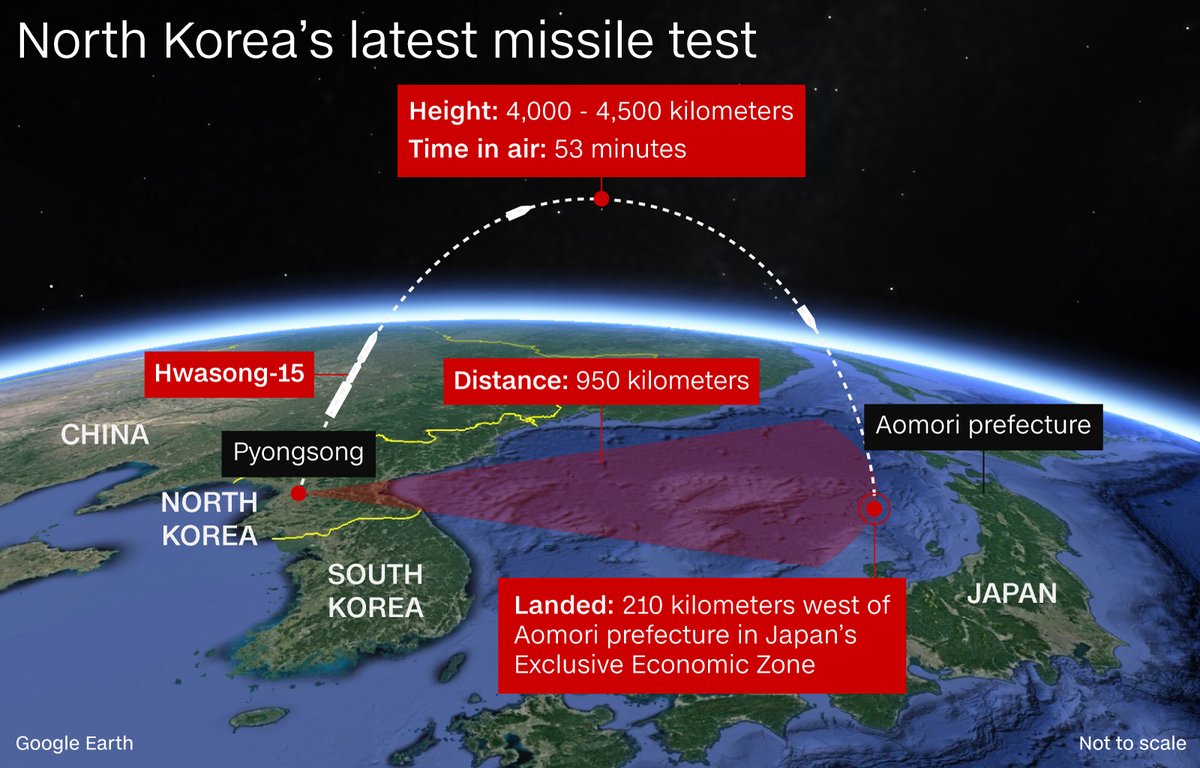Special to WorldTribune.com
 By Donald Kirk
By Donald Kirk
WASHINGTON – America’s top leaders are clearly uncertain as to how to retaliate for North Korea’s latest long-range missile test without resorting to a military option.
President Donald Trump pledged, “We will take care of it” but showed no sign of unleashing the “fire and fury” that he had famously threatened in a speech in the United Nations.
Defense Secretary James Mattis left no doubt of the mounting concern here about what options remain aside from ordering air strikes on North Korea’s nuclear and missile facilities.
The ICBM Hwasong-15 missile fired Tuesday, Mattis said, had gone “higher, frankly, than previous missile shots.” The North was advancing steadily to the point at which they may eventually be able to “threaten everywhere in the world” with long-range missiles carrying nuclear warheads.
 Despite the anxiety at the highest levels here, however, the sense was the U.S. still preferred to look for diplomatic rather than military solutions capable of bringing North Korea’s leader Kim Jong-Un to realistic negotiations on giving up his nuclear and missile program.
Despite the anxiety at the highest levels here, however, the sense was the U.S. still preferred to look for diplomatic rather than military solutions capable of bringing North Korea’s leader Kim Jong-Un to realistic negotiations on giving up his nuclear and missile program.
The American secretary of state, Rex Tillerson, made clear his preference for peaceful resolution of the crisis, saying “diplomatic options remain open for now.”
He coupled that view with “condemnation” of the missile test, saying the North’s “relentless pursuit of nuclear weapons and the means to deliver them must be reversed.” At the same time, he pleaded for international cooperation to see “how the global community can counter North Korea’s threat to international peace.”
The North Korean missile test interrupted Trump’s efforts to ram a new tax bill through Congress that has aroused bitter controversy. The president has been calling Republican members of the Senate to unite behind the bill, which many criticized for giving tax breaks to wealthy Americans at the expense of the middle class and those living in poverty.
Kim Jong-Un, by ordering the missile shot, may have given Trump a break by distracting attention from the controversy over the tax bill and highlighting an issue about which Republicans and Democrats agree. Despite the bitterness of the debate over taxes and also affordable health care, they all see North Korea’s nuclear program as a menace that must somehow be stopped.
The U.S. response was closely aligned with that of President Moon Jae-In, who condemned the missile in the strongest terms but stopped short of hinting at military action.
North Korea’s “reckless pursuit” of its missile and nuclear program “will lead to its isolation and demise,” he said, calling for the North to “come to the dialogue table.” His government, he added, “will never tolerate North Korean provocations.”
The hasty statements from Trump and Moon gave the impression that neither leader wanted to escalate the crisis to the point at which war would become unavoidable if not inevitable. They appeared, in fact, to have coordinated their responses.
The missile test, however, deepened fears that sooner or later the crisis would go beyond bluff and bluster. It came as a particular shock since Kim Jong-Un had not ordered a missile shot since mid-September.
More importantly, this latest missile was, as Mattis indicated, North Korea’s most successful missile test. It soared to a height of 4,500 kilometers, far higher than the previous shot on Sept. 15, which went 770 kilometers above the earth’s surface.
The missiles, however, differed markedly in their trajectory. The missile fired on Tuesday landed 960 kilometers from its launch site, west of the Japanese mainland. The Sept. 15 missile flew 3,700 kilometers, flying over the northern Japanese island of Hokkaido before splashing down in the western Pacific.
Tuesday’s missile, although it did not go nearly as far, demonstrated the capability of the North Koreans firing a missile as far as the U.S. west coast. By going so high into the stratosphere, the missile was demonstrated to have been able to go much further than any missile previously fired by North Korea.
Would Kim Jong-Un remain oblivious to intensified diplomatic pressure, stronger sanctions and worldwide condemnation?
The sense here is that Kim will almost surely order more missile tests – and probably another nuclear test as well. He does not appear in the least deterred by the loud denunciations that inevitably follow a test.
U.S. officials remain hopeful that China will apply so much pressure that Kim will have to agree to negotiations, but it’s far from certain China’s President Xi Jinping is willing to take the drastic steps needed to bring Kim to his senses.
The worst punishment China could deliver would be to cut off the flow of oil into North Korea. So far, however, while supporting UN sanctions, China has not been willing to consider such a drastic step.
In the meanwhile, Trump is highly likely to order shows of force – flights by B1 bombers and fighter planes across South Korea as well as exercises in the waters off South Korea. The U.S. and South Korea have been planning a massive show of force next week at sea next week.
One prime element in such exercises is mock “decapitation” of the North Korean leadership. U.S. special forces are sure to stage such exercises, but it’s not believed they are seriously planning to carry out such a threat.
